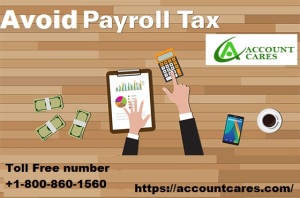As an employer, it is one of your tasks to withhold certain amounts of money from your employees’ wages. This withheld amount is then deposited at the respective authorities and agencies. Aside from that amount, you also have to pay taxes based on your organization’s income as well as the wages that you pay your employees.
Those taxes that you have to withhold along with the directly payable taxes are collectively known as payroll taxes. The ones which you are required to withhold comprise of federal, state and sometimes local taxes, including Social Security, Medicare and you should know how to control or avoid payroll taxes.
The FICA taxes mentioned here are actually split among the two kinds of payroll taxes, half of which is included in the withheld amount while the other half is counted as part of the payroll taxes that you pay directly to the authorities. Direct taxes also include the unemployment taxes levied by both the state and federal governments and disability insurance taxes depending on which state you are in.
Control or Avoid Payroll Taxes- Five Steps
The best way to control and fulfill your payroll tax commitments is to complete those payments before the deadline. Doing this will eliminate the chances of facing penalties and fines due to late payments.
In order to ensure that this happens, we offer help to make sure your firm always follows the rules by the following process, the steps of which we have carefully explained below-
Step 1
Not all your workers may be taxable- know the difference between your taxable workers and the ones who are not, and be clear on which category every employee falls in.
In case you are not sure how to distinguish, just answer this question- do you decide that tasks, timings, location, the method of working, etc. for the worker in question? If your answer is yes, then that person is your employee. If no, then the worker falls under the independent contractor category and are not taxable, at least not on your end.
Step 2
You need to know what part of the compensation you have to deduct the taxes from. There are multiple forms in which you are compensating your employees, such as reimbursement for expenses, fringe benefits, insurance premiums (both life and health), retirement benefits, bonuses, and payments other than the ones that you pay in cash.
You have to find out those forms of worker pay, apart from the regular salary or wages, that are taxable and which among these can decrease the wages that are taxable.
Step 3
Find out which of the payroll taxes actually apply to your organization. There are certain obligations that you need to fulfill once you gain employees. You know now that you have to withhold federal and state taxes from the income of your employees and can control or avoid QuickBooks payroll taxes easily.
Apart from that, you also deduct half of FICA (Social Security, Medicare, etc.) from their salaries or wages. The remaining half of the FICA taxes have to be paid by you from the money that you earn, along with that unemployment taxes that are levied accordingly by your state and the federation.
Step 4
Learn more about the payroll tax payments and returns- the processes for filing and payment, the forms, returns, rates, deadlines and so on. Be sure to mark the dates when your taxes are due so that you know when you could be missing the deadline and facing penalties.
Keep in mind that the dates for filing your taxes can be different from the dates for returns. Also, note that unemployment taxes are not paid together with the rest of the payments but separate from them.
Step 5
In case you’re self-employed, you still have to pay taxes for one employee- yourself! This is why you have to know the rates for self-employment taxes in your region. However, being self-employed will not make much of a difference if your business can be classified as a corporation.
This is because you will have to file your taxes in the same way that a company that has employees does. On the off-chance that you are a proprietor, you get to pay to kinds of taxes- the projected-income tax and self-employment taxes, so always be aware and learn to control or avoid payroll taxes.
Note – This Article Is Copy Right my Blogger site
